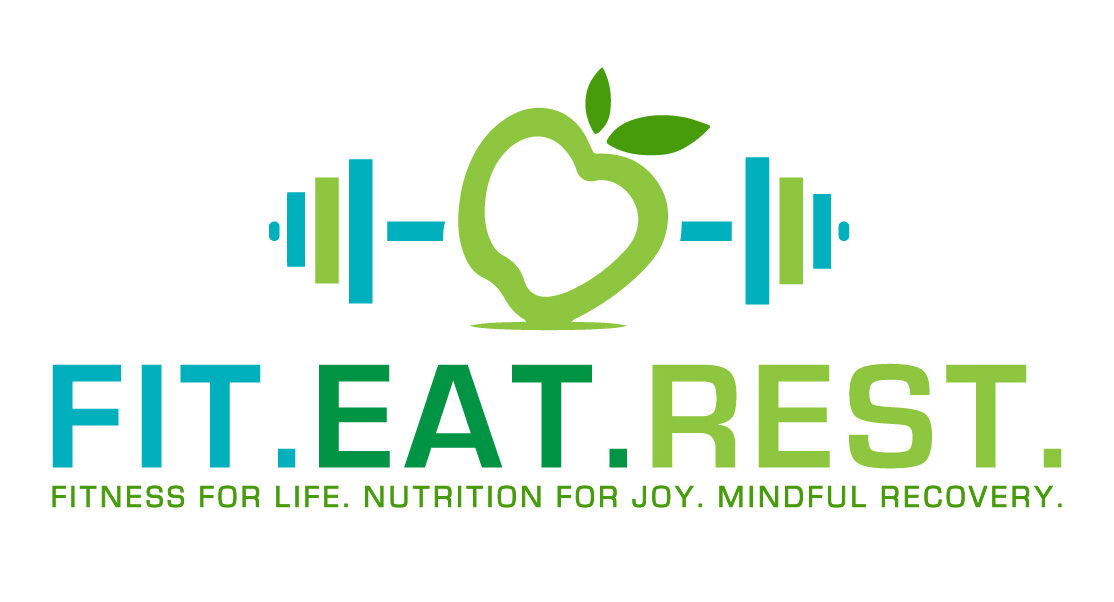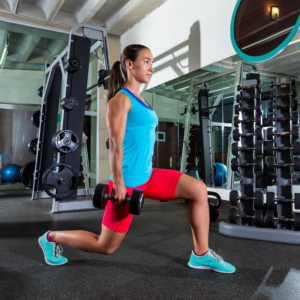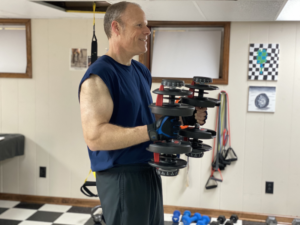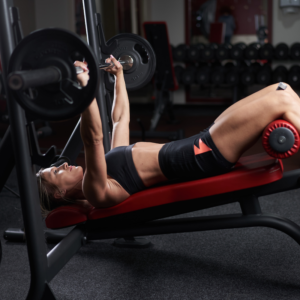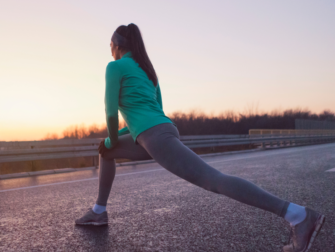As you approach menopause, you might notice a slew of changes. While some of them may be inevitable, a few changes can be either slowed down or prevented. Building and maintaining bone strength is a good example, because it’s so important for your overall health and quality of life. As estrogen levels decline during menopause, women become more susceptible to bone loss and osteoporosis, making it essential to adopt strategies that promote bone health.
What can you do? The answer is targeted workouts, combined with a balanced diet rich in bone-strengthening nutrients, so you can preserve bone density and reduce the risk of fractures.
Exercise is a cornerstone of bone health maintenance. Weight-bearing exercises are particularly effective at stimulating bone formation. Here are a few good examples of effective weight-bearing exercises:
Squats
This compound exercise targets multiple muscle groups, including the quads, hamstrings, and glutes, while also putting stress on the bones of the lower body, such as the hips and spine. If you are tired of the traditional suitcase squat, try sumo squat with calf raises:
Lunges
Lunges work the lower body muscles while also engaging the core for stability. Some call it the ultimate balance exercise, which means more muscles are recruited simultaneously. By stepping forward or backward and lowering your body, you place a significant load on the bones of the legs and hips.
Deadlifts
If you want stronger hips, you want stronger glutes first and nothing works the glutes like a deadlift. Deadlifts are excellent for strengthening the entire posterior chain, including the muscles of the lower back, glutes, and hamstrings. The movement also places stress on the bones of the spine and hips, promoting bone density. Do not allow your back to round and keep your knees stacked over the ankles. This 20 minute workout includes squats, lunges and deadlifts.
Push-ups
Although primarily targeting the chest, shoulders, and triceps, push-ups also engage the muscles of the core and lower body for stabilization. Push-ups are so much more than upper body work! This weight-bearing exercise helps maintain bone density in the arms, shoulders, and wrists. It’s also great for balance. If you feel too much strain in your wrist, try turning your fingers out or holding on to dumbbells. You can also do an elevated pushup on the wall or bar, or come down onto your knees. Focus on keeping your back straight and your elbows out to the back corners.
Planks
Planks are a fantastic way to engage the core muscles and improve overall stability. By supporting your body weight on your forearms and toes, you create tension throughout the body, including the bones, which helps to maintain bone density. Focus on keeping your spine long and squeeze the glutes to avoid the lift of your lower body. Walkout planks are a great example of a weight bearing exercise.
Resistance exercises, which involve using external resistance such as dumbbells or resistance bands, also play a crucial role in bone health. This could apply to any movement but here are a few examples:
Bicep curls
By curling weights towards your shoulders, you engage the muscles of the upper arms and shoulders, promoting bone strength in the arms. Keep your elbows right under the shoulder. If your elbows move back, you need to reduce the weight.
Chest presses
Chest presses target the muscles of the chest, shoulders, and arms while also engaging the core for stability. This exercise helps maintain bone density in the arms and shoulders. Open the elbows wide as you lower the weight and squeeze the elbows in as you press. You can use a bar, dumbbells or a machine to press. You can also add the challenge of an incline to add more gravity to the weight.
In addition to exercise, nutrition plays a vital role in supporting bone health. Calcium and vitamin D are essential nutrients for bone formation and maintenance. Calcium-rich foods include dairy products such as milk, yogurt, and cheese, as well as leafy greens like kale, collard greens, and broccoli. Other sources include fortified foods such as tofu, almond milk, and breakfast cereals. Vitamin D can be obtained from fatty fish like salmon and mackerel, egg yolks, fortified foods like orange juice and cereal, and through exposure to sunlight.
A few recipes for you to try: Cottage cheese high protein snack (calcium) & mediterranean cod (vitamin D).
Magnesium, phosphorus, and vitamin K are also important for bone health. Magnesium-rich foods include nuts, seeds, whole grains, and leafy greens. Phosphorus is found in high-protein foods such as meat, fish, poultry, dairy products, nuts, and seeds. Vitamin K can be obtained from leafy greens, broccoli, Brussels sprouts, and fermented foods like sauerkraut and kimchi.
My swiss chard stir fry is full of these minerals and vitamins:
Stronger bones obtained through exercise and proper nutrition offer numerous benefits as you age. They provide better posture, reducing the risk of falls and fractures. Moreover, strong bones support overall mobility and independence, enabling you to maintain an active lifestyle well into your later years. So prioritize bone health now, for a future of strength, vitality, and longevity.
